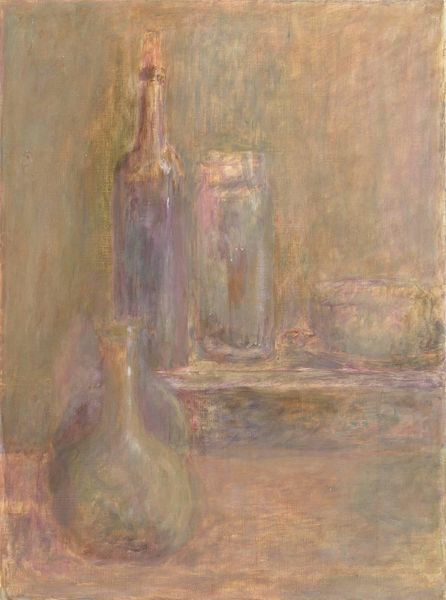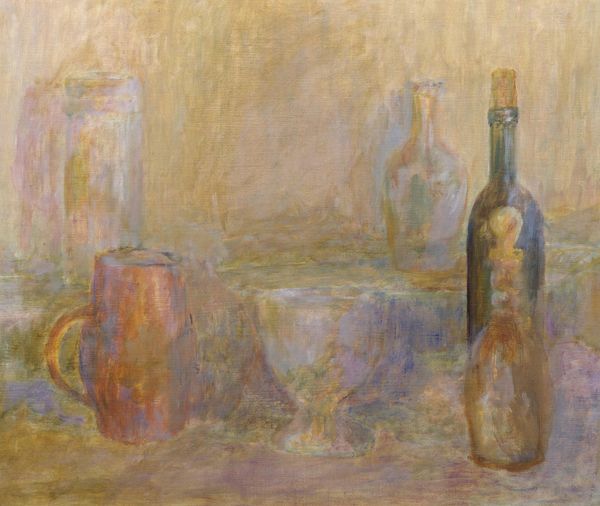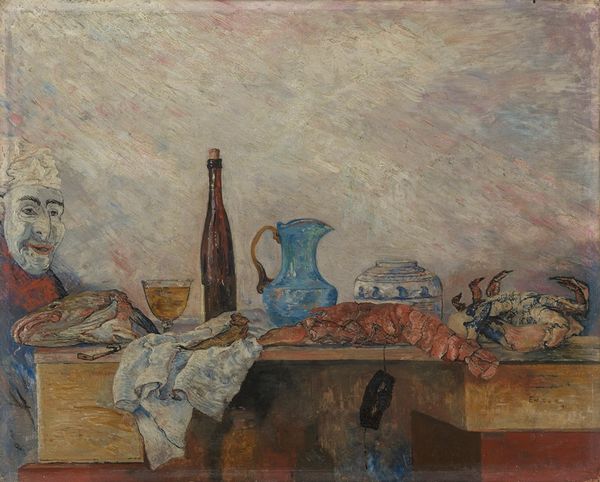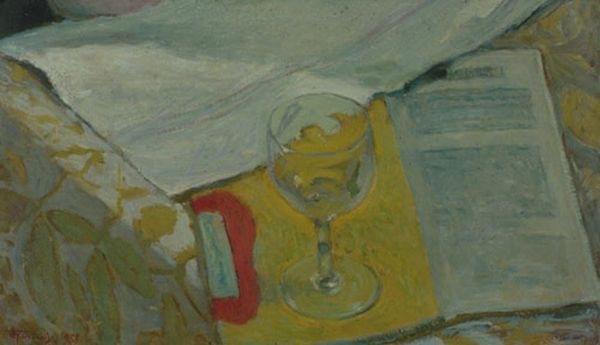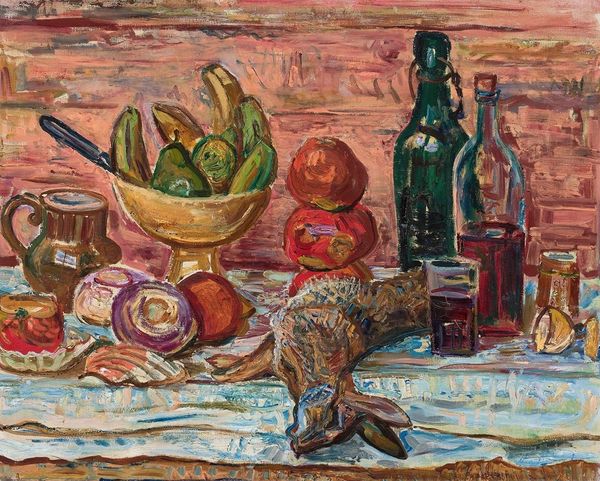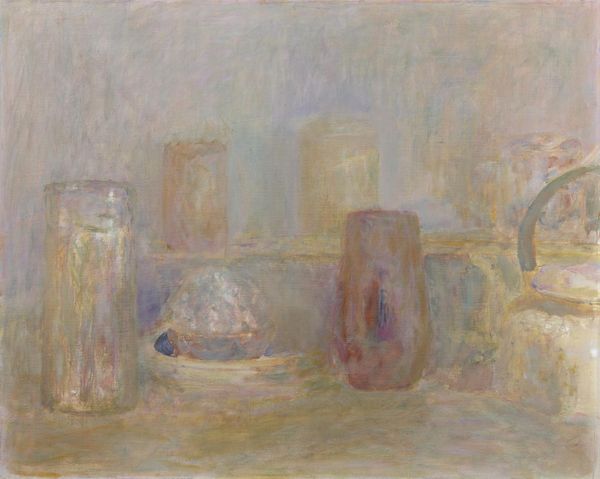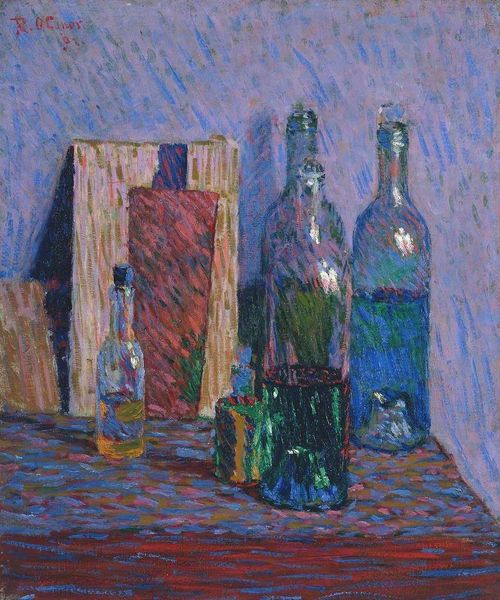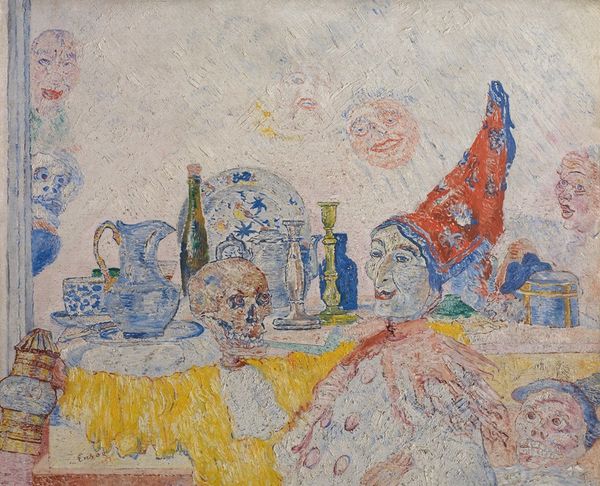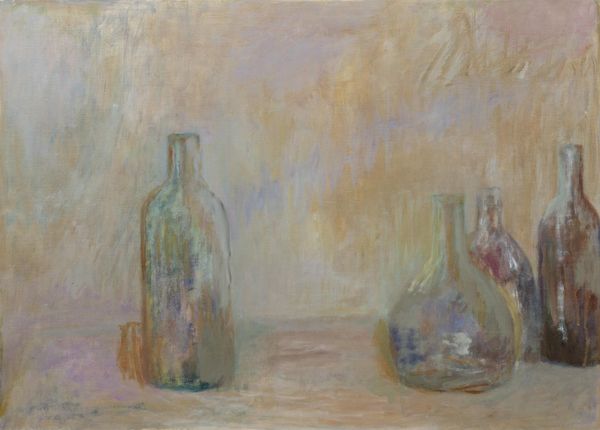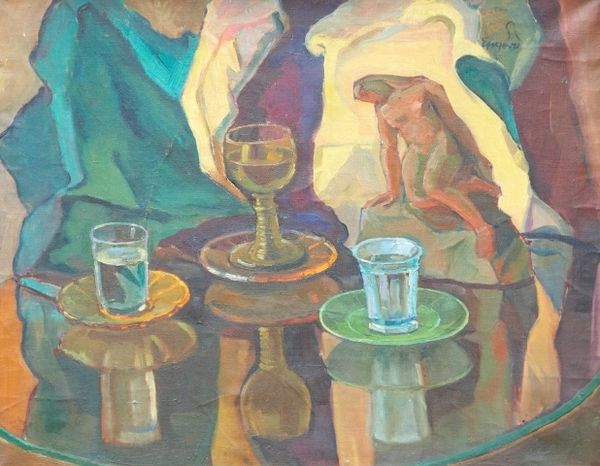
painting, watercolor
#
portrait
#
figurative
#
water colours
#
painting
#
figuration
#
possibly oil pastel
#
oil painting
#
watercolor
#
intimism
#
expressionism
#
symbolism
#
watercolor
Copyright: Public Domain: Artvee
Editor: James Ensor’s “The Artist’s Mother in Death,” painted in 1915 using watercolor, is quite striking. It’s dominated by the image of his mother lying in bed, but what really grabs me is the collection of bottles in the foreground. What do you see in this piece? Curator: For me, this work screams material process. Look at the way Ensor utilizes watercolor – a medium traditionally associated with lightness and spontaneity – to depict such a heavy, morbid subject. The juxtaposition of the delicate medium and the somber scene challenges conventional expectations about the inherent qualities of artistic materials and elevates it. Editor: That’s a very different perspective than I expected. Curator: Think about it – the bottles themselves, likely medicine, become almost symbolic of consumption, both literally and metaphorically. Ensor is laying bare the materials and processes involved in sickness, dying, and ultimately, remembrance. What do the various vessels holding different possible substances suggest about society’s relationship to the commodification of medicine? How does that affect our understanding of life? Editor: So, it’s not just about the emotional impact of the loss, but also about the materials surrounding the event and what they represent culturally. I never thought of that. Curator: Exactly! Even the statue hints at a sort of industry surrounding mourning. It’s about unpacking the social context embedded within the materials and processes depicted. Ensor makes a stark commentary on how we deal with illness, death, and grief through material means. It makes you question the accepted narratives around these topics. Editor: That completely changes my understanding. It is a deeper message about our consumer culture surrounding mortality than I first understood. Thank you for sharing that perspective. Curator: It has been an enlightening dive into Ensor's critique through materiality.
Comments
No comments
Be the first to comment and join the conversation on the ultimate creative platform.
